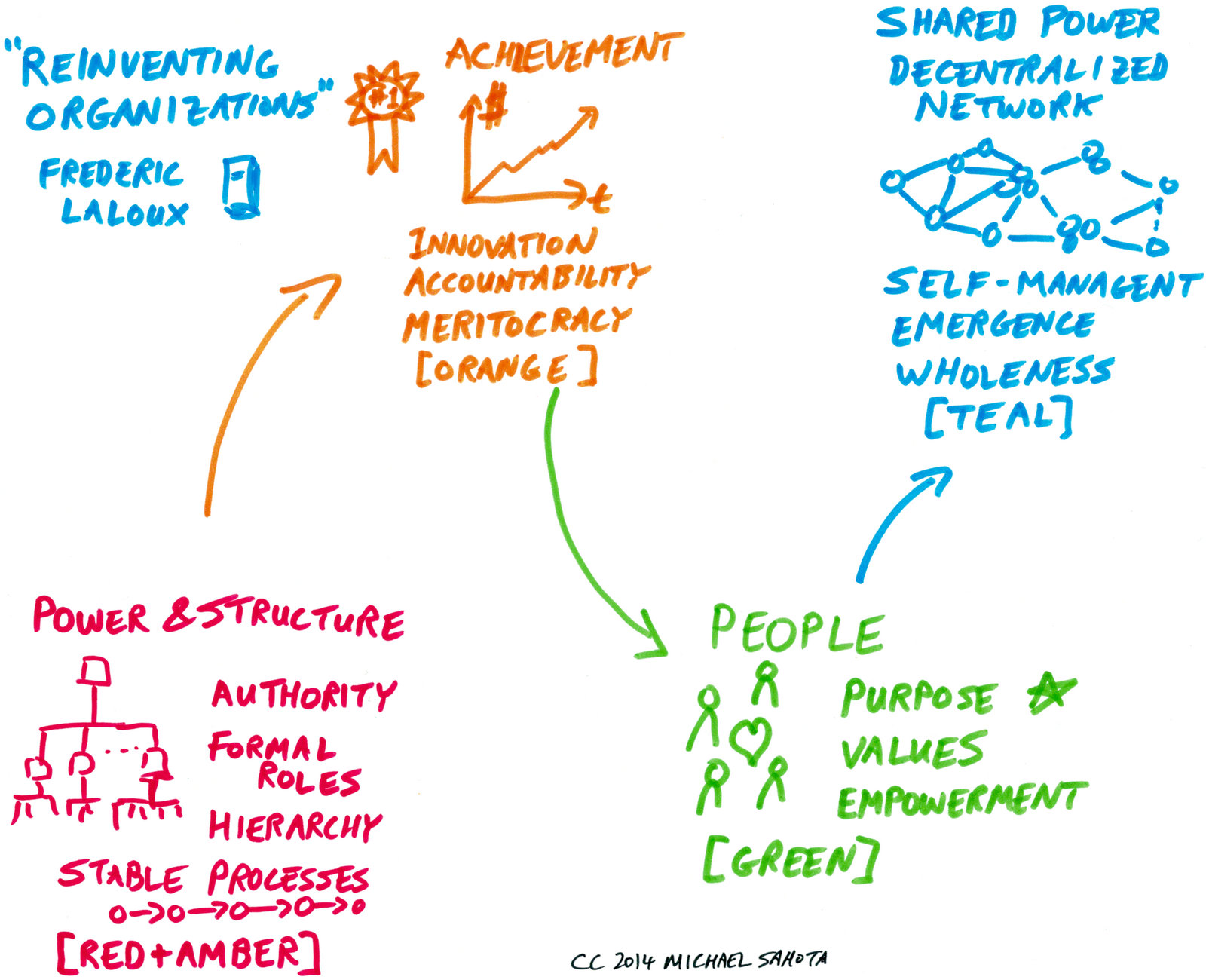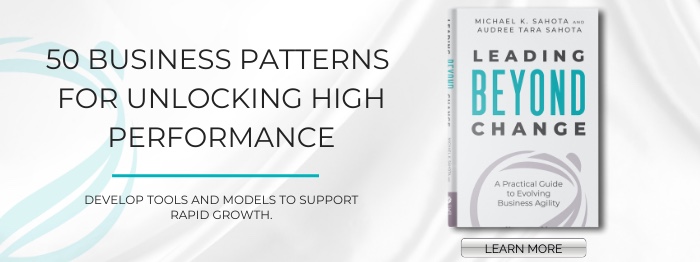Looking for a way to help evolve your organization’s culture? Frederic Laloux’s model provides a clear picture of how culture may evolve in an organization.
The model comes from Reinventing Organizations – a landmark book in the development of organizations that unleash the talents of people to get astonishing results. The book is grounded in case studies from around the world of organizations that are succeeding in a new way of working. The book has inspired me and helped me see much more clearly what is possible for myself and the clients I work with.
Laloux Culture Model
Frederic has a really awesome model for understanding organizational culture. It looks like this:

It shows how our society (over thousands of years) has evolved new ways of working together. Each stage has value: more advanced is not necessarily better – it’s about fit for context. It is derived from other models such as Integral, Spiral Dynamics, etc. Note that Laloux does not call this a culture model – he refers to it as stages in evolution of consciousness and organization.
Centralized Power & Structure [Red & Amber]
Red is about power: I am the leader – do what I say or else. Key innovations are the division of labour and authority. Examples include street gangs or tribal militias.
Amber organizations channel power through a hierarchy with formal roles and reporting lines (command & control). They establish stable processed that allow them to scale to a large size. Current examples are: military, government agencies, public school systems.
Achievement [Orange]
Orange is about a shift to focus on achievement: bigger and better. Innovation is key: how do we evolve our process? What projects do we need to improve things? With orange, we create plans and hold people accountable for results (predict & control). Since the focus is now on results, a meritocracy is formed based on who actually delivers. The organization is seen as machine to be exploited. Examples are multinational organizations and charter schools.
People [Green]
Green organizations focus on the empowerment of workers (within the hierarchy) as the key for driving success. There are explicit shared values that guide behaviour and decision-making. Green organizations have family as a guiding metaphor. They also have a clear purpose to support coherent activity. Green organizations see a bigger picture beyond profits: workers, customers and their role in the community. Examples include Southwest Airlines, Zappos, Ben & Jerry’s.
Shared Power [Teal]
Teal organizations are decentralized into autonomous teams or groups. Power is shared and people are self-managing. Decisions are made independently – there is no centralized group telling people what to do. Decision-making independence is enhanced with visibility and advice. Trust replaces process. People’s whole selves (mind, body, heart, spirit) are welcomed. The organization evolves through an emergent process since everyone can make decisions. The metaphor for Teal is that of a living system. Examples include: Patagonia, Morning Star,… (more in the book).

Go Read The Book
This is the best book I have read in years. It has helped me tremendously in getting a deeper understanding of the work I have been doing with culture for the last few years and helped me see the larger pattern of organizational evolution much more clearly.
In upcoming posts, I will write more about how to use this model and the Teal stage.


